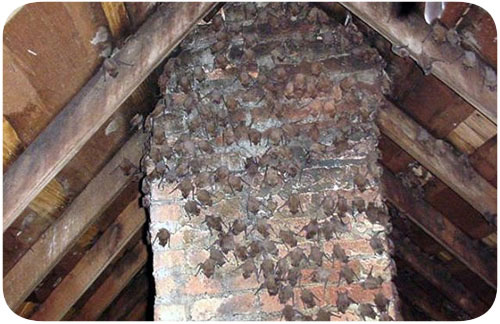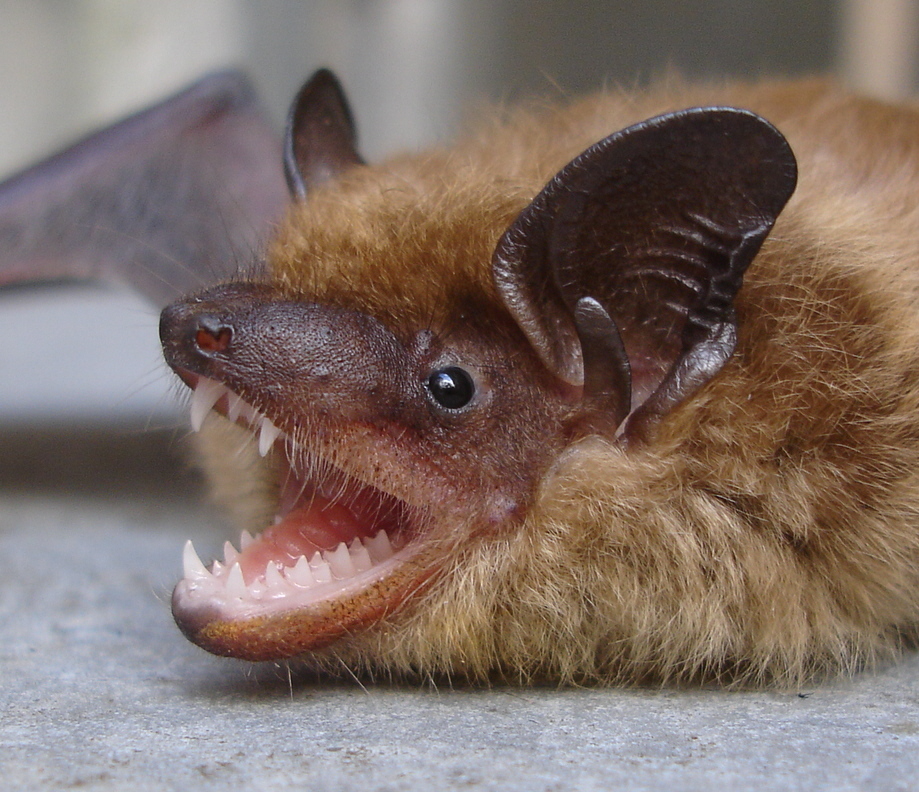|
|
|
|
|
|
|
Found through out North America and commonly found in attics, houses, buildings, caves, tunnels, and hollow trees. Commonly overwinters in houses and attics unlike the Little Brown Bat that generally migrates to caves in the winter. Colony sizes are usually small numbering; less than 100. The bats leave the attic or house at dusk and return to roost at daybreak. Feeds on the wing, usually on beetles and moths. American Animal Control specializes in bat removal from attics, houses, buildings using a non chemical bat removal method.
|
|
|
|
|
Found through out the United States. A colonial bat commonly found in attics, houses, and caves. Colony size is the largest for bats found in this area with numbers reaching 1,000 or more bats. The bats leave the house, attic, or roosting area at dusk to forage and returns at daybreak. This bat feeds on small insects while flying near water or wooded areas. Little brown bats usually has one young per year and can live for 20 or more years. American Animal Control specializes in bat removal from attics, houses, and buildings using a non chemical bat removal method.
|
|
|
|
|
|
Bats generally mate in the fall and winter, but the female retains the sperm in the uterus until spring, when ovulation and fertilization take place. Pregnant females may congregate in maternity colonies in attics, houses, buildings, behind chimneys, beneath bridges, in tree hollows, caves, mines, or other dark retreats. Births typically occur from May through July. Young bats grow rapidly and are able to fly within three weeks. Weaning occurs in July and August, after which the nursery colonies disperse.
Bats prepare for winter around the time of the first frost. Some species migrate relatively short distances, whereas certain populations of the Mexican free-tailed bat may migrate up to 1,000 miles (1,600 km). Bats in the northern United States and Canada may go into a semi-dormant hibernation from September through May. Semi-dormant hibernation for the same species in the southern part of their range may be shorter or even sporadic. Some may fly during warm winter spells (as big brown bats may in the northeastern part of the United States). Bats often live more than 20 years.
In response to a variety of human activities, direct and indirect, several bat species in the United States have declined in numbers during the past few decades. Chemical pesticides (particularly the use of persistent and bioaccumulating organic pesticides) may have decreased the insect supply, and contaminated insects ingested by bats may have reduced bat populations. Many bats die when people disturb summer maternity roosts and winter hibernacula. Vandals and other irresponsible individuals may deliberately kill bats in caves and other roosts. Even the activities of speleologists or biologists may unintentionally disturb hibernating bats, which depletes fat reserves needed for hibernation.
Modification and destruction of roost sites may have decreased bat numbers. Sealing and flooding of mineshafts and caves and general quarrying operations may inadvertently ruin bat harborages. Forestry practices have reduced the number of hollow trees available. Some of the elimination of natural bat habitat may also contribute to bats roosting in attics, houses, and buildings.
|
|
|
|
|
|
|
|
|
|
|






